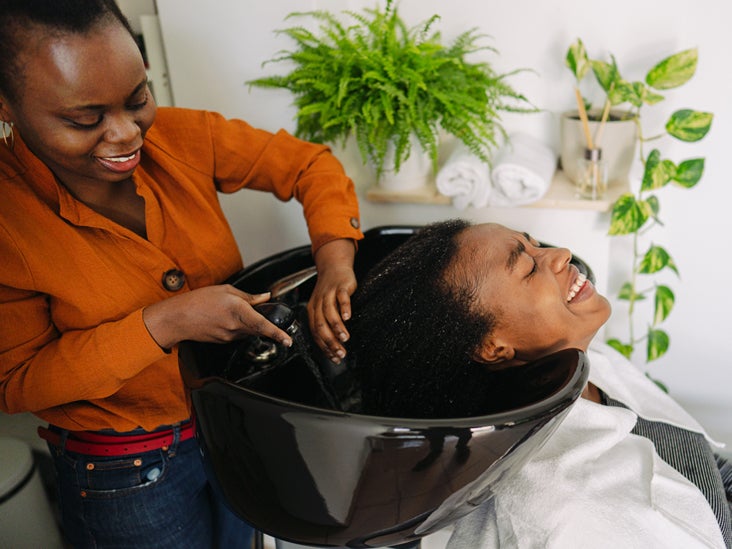Shampoo is a hair care product, typically in the form of a viscous liquid, that is used for cleaning hair.
Less commonly, shampoo is available in solid bar format. Shampoo is used by applying it to wet hair, massaging the product into the scalp, and then rinsing it out. Some users may follow a shampooing with the use of hair conditioner.Shampoo is typically used to remove the unwanted build-up of sebum in the hair without stripping out so much as to make hair unmanageable. Shampoo is generally made by combining a surfactant, most often sodium lauryl sulfate or sodium laureth sulfate, with a co-surfactant, most often cocamidopropyl betaine in water.
Commonly used ingredients
- Ammonium chloride
- Ammonium lauryl sulfate
- Glycol
- Sodium laureth sulfate is derived from coconut oils and is used to soften water and create a lather. There was some concern over this particular ingredient circa 1998 as evidence suggested it might be a carcinogen, and this has yet to be disproved, as many sources still describe it as irritating to the hair and scalp.
- Hypromellose cellulose ethers are widely used as thickeners, rheology modifiers, emulsifiers and dispersants in Shampoo products.
- Sodium lauroamphoacetate is naturally derived from coconut oils and is used as a cleanser and counter-irritant. This is the ingredient that makes the product tear-free.
- Polysorbate 20 (abbreviated as PEG(20)) is a mild glycol-based surfactant that is used to solubilize fragrance oils and essential oils, meaning it causes liquid to spread across and penetrate the surface of a solid (i.e. hair).
- Polysorbate 80 (abbreviated as PEG(80)) is a glycol used to emulsify (or disperse) oils in water (so the oils do not float on top like Italian salad dressing).
- PEG-150 distearate is a simple thickener.
- Citric acid is produced biochemically and is used as an antioxidant to preserve the oils in the product. While it is a severe eye-irritant, the sodium lauroamphoacetate counteracts that property. Citric acid is used to adjust the pH down to approximately 5.5. It is a fairly weak acid which makes the adjustment easier. Shampoos usually are at pH 5.5 because at slightly acidic pH, the scales on a hair follicle lie flat, making the hair feel smooth and look shiny. It also has a small amount of preservative action. Citric acid, as opposed to any other acid, will prevent bacterial growth.[28]
- Quaternium-15 is used as a bacterial and fungicidal preservative.
- Polyquaternium-10 acts as the conditioning ingredient, providing moisture and fullness to the hair.
- Di-PPG-2 myreth-10 adipate is a water-dispersible emollient that forms clear solutions with surfactant systems.
- Chloromethylisothiazolinone, or CMIT, is a powerful biocide and preservative.
A number of contact allergens are used as ingredients in shampoos, and contact allergy caused by shampoos is well known.Patch testing can identify ingredients to which patients are allergic, after which a physician can help the patient find a shampoo that is free of the ingredient to which they are allergic.
Photo Credits: Shutterstock








Hey, Thanks for sharing this amazing hair care ingredients for my hair texture.